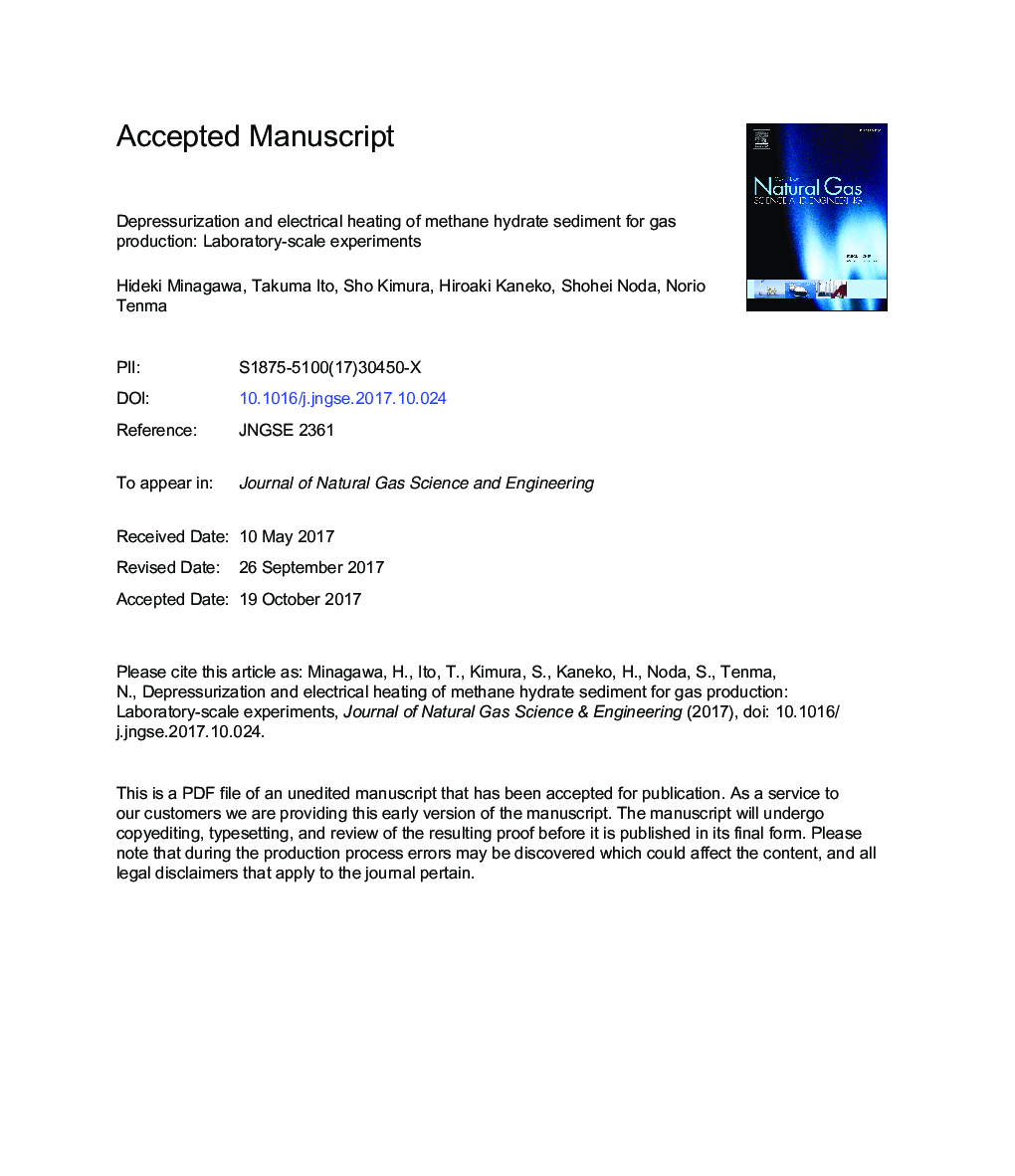| Article ID | Journal | Published Year | Pages | File Type |
|---|---|---|---|---|
| 8128398 | Journal of Natural Gas Science and Engineering | 2018 | 50 Pages |
Abstract
The in situ dissociation of methane hydrate is necessary for the commercial recovery of methane gas from sediments. Thermal stimulation and depressurization are both effective dissociation methods. To simulate methane gas production from a methane hydrate (MH) layer, we used laboratory experiments to investigate the use of depressurization with electrical heating on MH sediment. To clarify the effect of temperature around the production well of the MH layer, depressurization experiments were examined at three initial temperatures: 0 °C, 3 °C, and 10 °C. A MH sediment core saturated with NaCl electrolyte solution (3.5 wt.%) was used. After depressurization, the core temperature decreased to between 10 °C and 3 °C below the initial temperature because of the endothermic MH dissociation reaction. When electrical heating was applied during depressurization at the initial temperatures of 3 °C and 10 °C, this decrease in core temperature was suppressed, and the core temperature increased to between 1 °C and 9 °C above the initial temperature. Electrical heating at a current density of 10 A/m2, which corresponds to an electrical power of 1.6-0.8 W/kg, during depressurization was found to dissociate the hydrate effectively. Overall, the findings indicate that depressurization combined with the electrical heating of hydrated sediment saturated with electrolyte solution enables higher gas production compared to depressurization with lower electrical power.
Related Topics
Physical Sciences and Engineering
Earth and Planetary Sciences
Earth and Planetary Sciences (General)
Authors
Hideki Minagawa, Takuma Ito, Sho Kimura, Hiroaki Kaneko, Shohei Noda, Norio Tenma,
